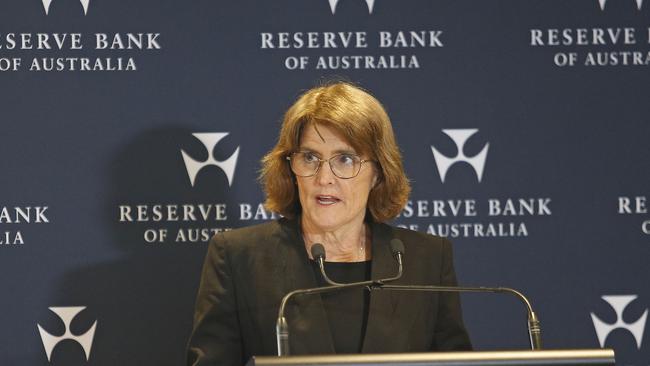
The vast bulk of economists expect the central bank to wait until May to make its next move, when it will be able to justify what would be just the second cut in the current cycle using updated economic forecasts and the likelihood that first-quarter inflation data at the end of April will confirm that price pressures have been tamed.
The RBA’s governor Michele Bullock indicated strongly in February that the bank’s decision at the time to lower the official cash rate should not be seen as ushering in a flood of cuts.

She was cautious about lingering inflation threats and worried that with unemployment at around 4.0 per cent, the labour market might become a source of wage pressure as the economy recovers in 2025, supported by income tax cuts announced in mid-2024.
The problem of turbocharged government spending ahead of an election on May 3 will have also been on Ms Bullock’s mind in February.
But things have changed significantly, and the RBA needs to throw off its ultra cautious stance and deliver a cut Tuesday.
With the world’s major economies speeding toward “liberation day” and what will likely be the biggest trade war in generations, bets on a US recession are rising, and the world growth outlook is in a tailspin.
Ms Bullock’s introspection in February is no longer relevant.
On Wednesday, the Trump administration is expected to announce an avalanche of tariffs on US trading partners that will likely spark reprisals.
The potential for tit-for-tat tariffs takes place against the backdrop of an alarming deterioration in global diplomatic relations and the trashing of post-war alliances.
Amid all this, there’s very little cheer for businesses who are witnessing the demise of the global supply chains they’ve worked hard to secure over decades.
US banking giant Goldman Sachs on Monday raised its estimate of the probability of a US recession in the next twelve months to 35 per cent from 20 per cent, highlighting the significance of the threat to confidence and growth.
“There are costs (for the RBA) to waiting until May to cut. Waiting is not always a virtue,” said Andrew Boak, chief economist at Goldman Sachs in Australia.
“One of them is evolving global risks, which the RBA has yet to factor into their macro forecasts, and we think clearly argues for less restrictive monetary policy in Australia,” he added.
The RBA board’s options are narrowing by the day, and it would be a lot better if it were to take out some insurance now, instead of stubbornly hanging out until late May while spouting narratives around sticky inflation.
The fact of the matter is that inflation Down Under is pretty much under control. It’s evident from the data already reported that there is a clear downward trajectory in core CPI numbers.
Part of the RBA board’s hesitancy might be related to its fixation on getting inflation back to the midpoint of its 2 per cent to 3 per cent target band. Only then will it truly feel justified in cutting interest rates.
But the scope of global uncertainty now easily trumps the RBA’s desire to drag its feet in order to achieve a few more decimal points of falling inflation.
The three-year battle to contain inflation is pretty much over, and the troops have boarded ships for home.
The RBA’s goal is to achieve low inflation on average over the course of the economic cycle. Only a few economists would say that this crucial goal has not been reached.
The central bank might also want to stay sidelined this week to avoid being made a political football in campaigning ahead of the federal election.
Australians carry a lot of household debt, and many derive their wealth from investment properties. Those factors always keep the RBA and interest rates in frame, and any misstep by the bank can, and has, been the downfall of governors.
The RBA now has before it the opportunity to put aside its models, fan charts and introspection to act preemptively for the good of the economy, which is facing a very fragile outlook internationally.






The Reserve Bank’s newly-formed monetary policy board needs to get down to business quickly and debate the merits of an immediate interest-rate cut when it gathers for its first meeting this week.